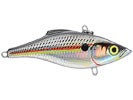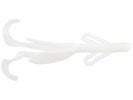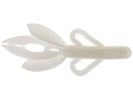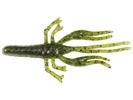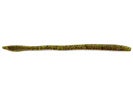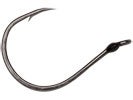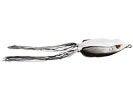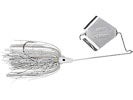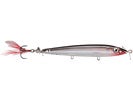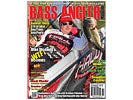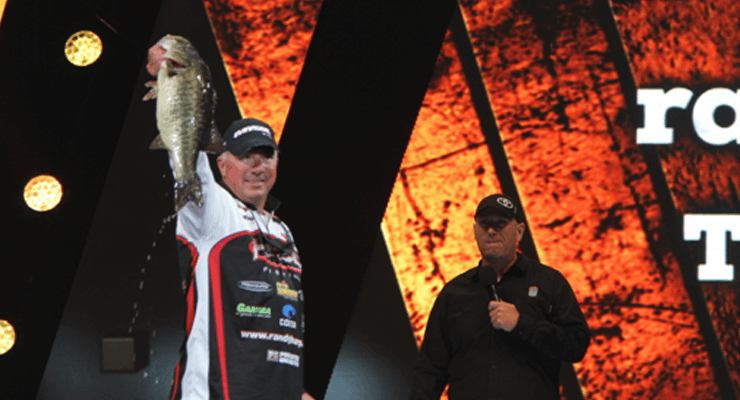
“This time of year is the easiest time of year to catch fish shallow and it is the time when most fishermen think of fishing shallow,” said two-tour pro Randall Tharp. “If there is one time of year that the majority of fish in a lake are in three feet or less, it is spring.” Because he is a tournament angler, Tharp’s focus is quality over quantity and he will choose lures that he finds will typically draw bigger bites. “Sometimes bigger fish are simply caught by using larger lures,” he said.
“Whether you’re trying to catch more fish or bigger fish, this time of year there are so many techniques that are applicable to shallow water fishing. You can be successful on topwater lures, crankin’, flippin’, pitchin’ and more. You can have 10 rods on deck and catch fish with each one of ’em in the spring.” To make the best lure choice on any given day, Tharp weigh the conditions, adapting for cold fronts, warming trends and other seasonal changes.
Cover Water For Pre Spawners:
 Crankbaits, spinnerbaits and lipless cranks are all versatile tools to use to cover water in spring. A favorite lure of Tharp’s is the lipless crankbait. “This particular technique lends itself to covering a bunch of water, which is necessary at this time year, more than any other,” said Tharp.
Crankbaits, spinnerbaits and lipless cranks are all versatile tools to use to cover water in spring. A favorite lure of Tharp’s is the lipless crankbait. “This particular technique lends itself to covering a bunch of water, which is necessary at this time year, more than any other,” said Tharp.
“Until I figure out where the fish are located and what they are doing, I want to keep the trolling motor on high and cover water. This is a bait that allows me to do just that. All the major manufacturers make a good lipless crankbait. I am sponsored by Rapala and I always have a Rattlin’ Rap tied on.”
Prior to the fish spawning, Tharp likes crankbaits in a crawfish pattern as a good starting point. His preferred high percentage targets are isolated cover, such as docks, grass or standing timber. “Don’t over look isolated cover that you cannot see,” advised Tharp. “Use your electronics to find it under the water. You can also cover water to find them, fishing your way around, feel your way down the bank and break lines and you will locate it.”
Tharp’s retrieve is slower in the colder water and is sped up as the water starts to warm. “The water doesn’t have to be really warm, it just has to be warming,” he said. “I have caught them burnin’ the bait in pretty cold water, but it was on a warming trend. Just a couple of degrees can make all the difference. The sun doesn’t have to be directly shining on the water, but even later in the day, the water temp can spike up enough to make that difference.
If you can key in on that warming water and adjust your retrieve accordingly, it can really put ’em in the boat.” Tharp will use a reel/pause method as an effective retrieve for his lipless crank. “I will kill it immediately following contact with any object,” he said. “At the pause, I will let the lure fall straight down on a controlled-slack line.” Tharp uses a controlled-slack line, so that he doesn’t hinder the bait with a tight line or comprise the sensitivity with too much slack. He picks locations using a map, seeking out spawning flats. “I am looking for areas that are sheltered from the wind,” he said.
Also shallow pockets that warm up faster in the sun are good starting places.” Tharp works back to front. “This time of year, it is easy for the fish to be up there in one foot of water, so I will go to the back of the spawning bay as shallow as I can get and then fish myself out to the secondary points. It will only take you a couple of pockets before you can figure out how they are positioning.”
Blind Cast As They Move Up:
 If Tharp finds there is a large population of fish on beds, he does not use a lure for covering water. He looks for preferred bedding areas that offer cover and sun.
If Tharp finds there is a large population of fish on beds, he does not use a lure for covering water. He looks for preferred bedding areas that offer cover and sun.
If he locates a fish on a bed, Tharp will visually fish it, but feels it can be quicker and easier to fish an overall target area.
“For example, if I’ve found some fish set up by a bush and I can stay back off of them, so that they don’t see me, my chances of quickly catching the fish are a lot greater.” Tharp warns shallow fish tend to be spooky, stressing, “long casts are critical to his success.
“Sometimes, it is even better to locate a fish on a bed and put it away in the back of my mind, then go fish down the bank and come back, making a long cast to it,” he said. If there is a fish on a bed and it doesn’t know I’m there and I can make a cast anywhere near that bed, I can catch em just about every time”. Tharp blind casts flats with a target-oriented bait, using a Texas-rigged Zoom Brush Hog.
He rigs his Brush Hog with a 1/4 oz weight. He chooses green pumpkin for water clear to stained water and if the water is a little bit darker, he will go to then black or black and blue.
On The Bed:
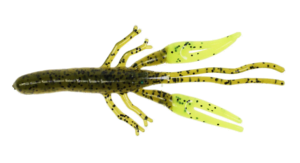 Tharp employs a 10 minute window to determine if a fish is catchable. He sticks with only one bed bait (a white Zoom Super Hog) when fishing against the clock with his self-imposed 10 minute timer. “I pull all the appendages off, presenting it as a tube-style bait with a little tail,” said Tharp.
Tharp employs a 10 minute window to determine if a fish is catchable. He sticks with only one bed bait (a white Zoom Super Hog) when fishing against the clock with his self-imposed 10 minute timer. “I pull all the appendages off, presenting it as a tube-style bait with a little tail,” said Tharp.
“If I have decided to stay longer than 10 minutes and catch it, I may go through three or different baits. I keep them tied on and ready for workin’ bed fish. Usually it is a Brush Hog, a big Critter Craw or a dropshot, but I only go to these, if I am going to commit to the fish. If I believe it is catchable and then I will spend longer than the 10 minutes.”
Cruisers:
When observing a population of shallow cruisers, Tharp will go to a wacky-rigged stick bait. “I personally like a Trick Worm in green pumpkin with a chartreuse tail,” he said. “I use 10 lb braided line, usually with a 8 lb fluoro leader. I make a skip cast across the top of the water, so that I can control the distance and stop the bait right in front of the fish, while the weightless worm drops right down in front of them.
It is a deadly way to catch cruising fish around the country.” A stealthy approach and presentation is key for Tharp. “I keep the boat backed off the swim path of the fish,” he said. “The fish are smarter than people think they are, so I am always trying to present the bait without them seeing me.”
Fry Guarders:
Once the fish are guarding fry, Tharp goes to a swim jig. His other top choices for post spawners are a topwater or a floatin frog, a buzzbait or a prop bait. “This is an easier stage for me,” he said. “You can totally get a reaction-style bite right after they bed. I don’t think you have to stay as far from ’em during this stage.
You can kick your trolling motor on high and start covering a lot more water again.” When concentrating on the fry guarders, Tharp is still targeting protected, bedding areas. “A large population of fish are going to be in these type of places, depending on the area of the country.
Click Link To Shop: Bass Angler Magazine
Randall Tharp 3 Feet Or Less Spring 2015 Bass Angler Magazine (Jody Only pg. 83-85)
- 14 colors available
- 62 colors available
- 12 colors available
- 11 colors available
- 55 colors available
- 33 colors available
- 6 colors available
- 4 colors available
- 1 colors available
You might also like Three Feet Or Less In The Fall With Randall Tharp


